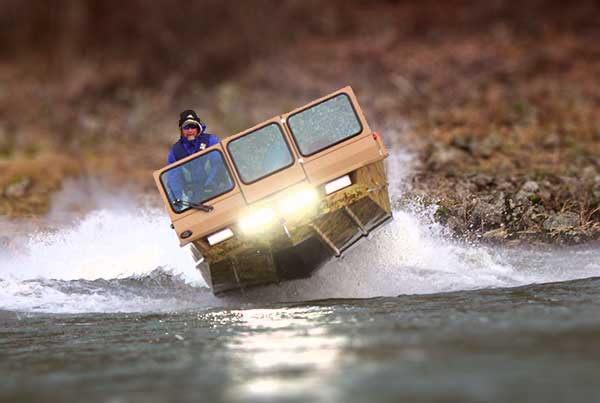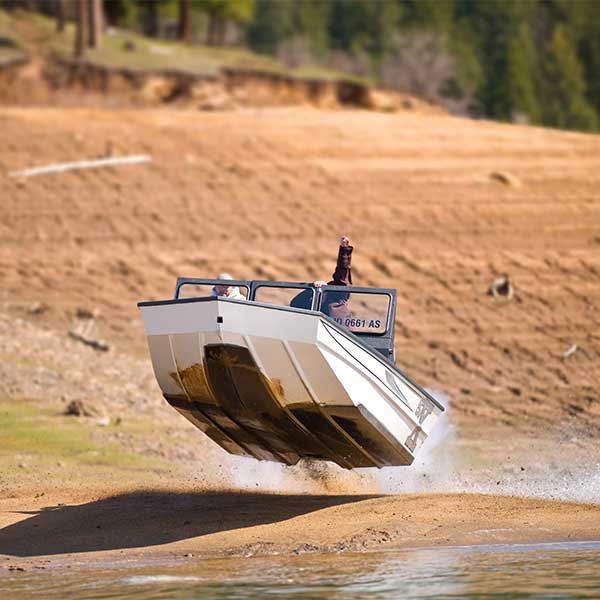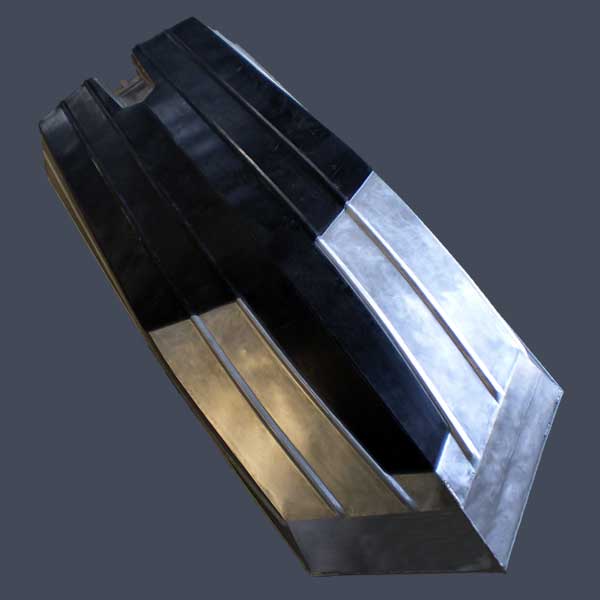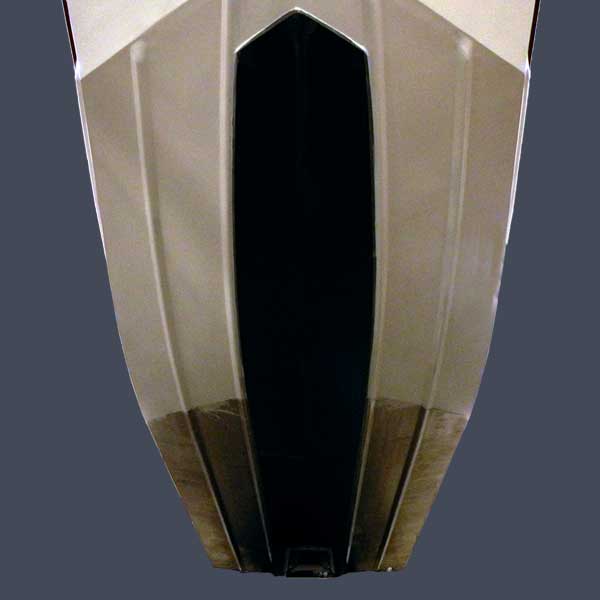
Our design isn’t just the original that started it all, it’s the best inboard tunnel hull jet boat on the market, hands down.
We’re not just boat manufacturers; we’re boat users. These boats came out of our necessity to get where no one had ever been. Being both avid hunters and anglers and the desire to extend our “playground” can be seen in every boat that leaves our facility. We don’t like being told what can’t be done; we like proving them all wrong.
Going The Extra Mile Brings You Closer To Perfection
An SJX inboard tunnel hull gives you freedom on most any navigable waters

The most frequent question we get is, “How are your jet boats able to run in such shallow water?” Well, there are a few factors that make this possible: the frame design and structure of the hull, the continuous welding we do, the balanced power to weight ratio, and the most significant reason is the design and creation of the inboard tunnel hull. The tunnel hull allows the jet to be elevated off the plaining surface of the boat. The jet is approximately 3 inches higher than the actual bottom of the boat. As the jet boat is being pushed forward under power, water from the front (where the tunnel begins) coming off the bottom surface of the boat is drawn into the approach and upward into the elevated jet. You can be hitting debris and obstacles with the bottom plaining surface of the boat, but, if there is water, it will continue drawing up into the tunnel approach which still feeds the jet. Again, this is because it is elevated 3 inches above. So, let’s say you are in a scenario where there’s literally one inch of water, and you don’t have a choice but to go over that water. The hull would actually be making contact with the bottom of the river but as long as you still have that inch of water, the tunnel hull is still going to draw water and feed the jet even though you are rubbing the bottom. Obviously, as a result of rubbing the bottom of the river, you’re stirring up the bottom and loosening gravel and debris which could be drawn to the pump. That’s where the stomp grate comes into play and does not allow the bigger debris to flow into or be sucked into the pump. As long as there’s water being provided to the jet, you will be propelled forward. Without the tunnel hull elevating it, the jet would be making direct contact on the bottom of the river at the same level as the bottom of your boat. In essence, you would be shoveling rocks and debris right into the jet. That is the tunnel hull difference.
Our UHMW Polyethylene “Non-Stick” Boat Bottom Is Unmatched
We took it one step further with the SJX with the addition of the UHMW Polyethylene bottom. The idea evolved through years of testing, trying different products on the bottom of the boat until it met our standards.

The “Black Ice” bottom covers the portion of the boat that’s in contact with the water for added protection at slower speeds.

The “Point-n-Shoot” Bottom covers the vital portions of the boat when traveling at more moderate speeds.
SJX took it to the next level adding UHMW on the bottom of our already incredible shallow running jet boat. We tried paintable. We tried spray on bottoms. We tried putting plastics on the bottom. Then we came across this product that was produced in Germany. It was a bondable UHMW. We then had to come up with adhesives to bond the UHMW to aluminum.
The purpose of the UHMW bottom is to give you an “insurance policy” on the bottom of your boat. When you don’t see that rock that’s an inch under the water, when you don’t see that stump, or that log, by applying the UHMW you are putting this half-inch thick insurance policy on the bottom of your boat. It is slippery, durable, and takes the impact. You can hit the debris and obstacles and save your boat.
Impacting a rock in one of our competitor’s boats that does not have UHMW is kind of like going to a dentist and having him pull a molar without anesthesia. The impact of aluminum hitting a rock at 30 to 40 miles an hour is like the feeling produced by a car wreck. Something is going to give, and it is usually going to be the bottom of the boat. We do not know of any other manufacturer currently that is combining the Indmar 2.3 L Ecoboost power plant on a tunnel hull with bonded UHMW on the hull. There are some manufacturers that put plastic on the bottom of the boats, or steel, or half-inch aluminum. Generally, these things make the boat a lot heavier. It just has never made sense to us to drill hundreds of little holes into the bottom of the boat, in something that’s made to float. Each little hole adds a potential point for leakage to your boat. With the UHMW bonded to your hull, there are no structural fasteners. There are not hundreds of potential leaks after years and years of use and stress. Plus, if you do end up damaging the bottom of the boat, you can patch in another piece. Keep in mind, that this doesn’t make you absolutely bulletproof because if you end up hitting a sharp rock that does scratch into the bonded UHMW bottom, it might peel, it might scratch, but the alternative is ripping a hole in your aluminum bottom. That is why we say it’s like buying an insurance policy for the bottom of your boat. UHMW is designed for heavy boat users. The SJX will run just fine with or without the UHMW bottom in very shallow water because it’s designed to do so.
We are always happy to answer any questions you may have about our boat models.